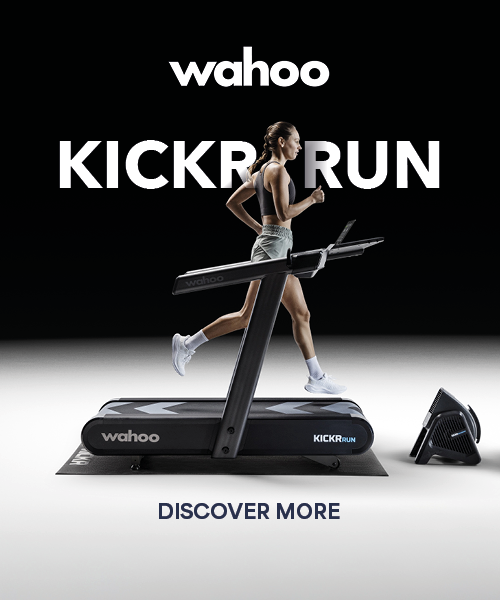Running is one of the most accessible and rewarding forms of exercise that offers countless physical and mental health benefits. Whether you’re a beginner training for your first 5K or you’re logging long miles for a marathon, the risk of injury is something every runner faces. From shin splints to stress fractures and minor aches and pains, injuries from running can derail your progress and curb your enthusiasm if left unchecked. However, the good news is that running injuries are preventable with the proper gear, a good warm-up routine and paying attention to your recovery post-run.
In this guide, we will break down the most common causes of running injuries and provide practical, expert-backed tips that will help you stay healthy, strong, and injury-free when running so you can keep chasing your fitness goals, one step at a time.
How do I improve my running form?
Maintaining the correct running form is key to performing your best and achieving your goals. Whether you’re new to running or a seasoned runner, perfecting your form is essential to preventing injury, improving performance and making each run enjoyable. There are four main areas to concentrate on when it comes to running form - posture, cadence, foot strike and breathing technique. Below are a few top tips for improving your running form.
Perfect your posture
Working on your running posture is critical to improving your running form. With most of us spending a lot of our days at a desk or in a car, the impacts of this on our posture can affect the way we run. Correcting your running posture will require you to conscientiously focus on your posture in the beginning, but over time, this should become a natural way to run. The next time you go out for a run, pay particular attention to holding your head high, reaching the crown of your head upwards to keep your back straight, and looking straight ahead.
It’s important to keep your jaw, neck, and shoulders relaxed, with your elbows bent at a 90-degree angle so your hands can easily glide past your waistline. Leaning forward when you run will also help shift your centre of gravity, making it easier to land your foot directly under your body and reduce the braking force of an overstride. Putting these tips into practice, you will be able to correct your posture to the point of this becoming second nature, allowing you to feel the benefits in your performance and how your body feels when running, and prevent injury.
Avoid overstriding
Avoiding overstriding when running is all about focusing on increasing your cadence and perfecting your footstrike. Your cadence refers to the number of steps you take per minute. For most runners, cadence should be around 180 steps per minute to help minimise impact and reduce overstriding. If you have a higher cadence, then you will be taking shorter, more frequent steps. If you’re unsure if your cadence is correct, a good rule of thumb is to pay attention to the alignment of your knee and ankle - ideally, your knee should be directly above the ankle to avoid overstriding.
To perfect your running form, try increasing your running cadence by 5% and see how it encourages you to reduce the overstride - in turn, you should feel lighter on your feet. If you're struggling to set a good running cadence, a way to help this is to use a digital metronome.
When it comes to perfecting your foot strike when running, you should aim to land with your foot under your body, not in front. Regardless of whether you heel strike or forefoot strike, the position of this contact with the ground when running in relation to the rest of your body has a huge role to play in determining how heavy the impact is and how much stress it then puts on your joints.
Incorporating exercises like drills and hill intervals can also help improve your running form and reduce overstriding. A-skip drills involve high knee lifts and toe touches, helping to train you to snap your leg back and land your foot under your body. Running uphill also naturally forces you to shorten your stride and land your foot more directly under your body, making it difficult to overstride.
Strengthen your core
A serious limiting factor to staying injury-free when running lies in your core strength and your flexibility, especially around activating your gluteal muscles. Your core and glute muscles are the two key groups that play a big role in keeping you stable when running. A weak core or imbalances around these areas can lead to running-related injuries and problems with your knees, hips and back.
Incorporating exercises that engage your abdominal muscles and ones that stretch your hips and posterior chain muscles can make a huge difference both in terms of injury prevention and improved running performance in the long term. Exercises like planks, mountain climbers and glute bridges can all help to strengthen your core and glutes at the same time.
Perfect your breathing technique
Getting your breathing rhythm right when running is integral to perfecting your running form, as it is responsible for delivering oxygen to your muscles to help you run for longer with less fatigue. Your breathing should fit in with the overall rhythm that your body is working to, with your inhale and exhale varying depending on the intensity of your exercises. Taking deep, rhythmic breaths, in through your nose and out through your nose, is the most effective breathing technique for running. This technique helps to ensure efficient oxygen intake and carbon dioxide expulsion.
A good breathing technique to follow when you’re running is to align your breath with your steps. A common pattern is inhaling for 3 steps and exhaling for 2 steps (3:2 rhythm), however, you can adapt this to fit your running pace and intensity. The next time you’re running, pay attention to your breath to get a sense of a comfortable rhythm and experiment with different breathing patterns to find what feels most comfortable and efficient for you.
What are the most common running injuries?
Getting injuries when running is very common, especially in those who run frequently or are new to the sport. The most common running injuries usually affect the knee, foot, ankle and hamstrings and include:
-
Plantar fasciitis - This is one of the most common causes of persistent heel pain. If you have plantar fasciitis, you may find that the pain is worse after rest, but gets better as you become more active. Around 1 in 10 people who run regularly develop plantar fasciitis. Using a specifically designed plantar fascia sock can help to reduce and relieve the effects of this common injury.
-
Shin splints - Known as Medial Tibial Stress Syndrome, this is another common running injury where the pain occurs in the front of your lower leg between your knee and ankle. It’s caused by repetitive impact, especially if you run on hard surfaces such as the road.
-
Runner's knee - Also known as Patellofemoral Pain Syndrome, the main symptom of runner’s knee is a dull, aching pain around and in front of your knee, or behind your kneecap. This pain gets worse after activities that add strain to the kneecap, such as climbing stairs, squatting, or running. The exact cause of this injury isn’t known, but it’s thought that overtraining and weak supporting muscles around the knee joint could contribute. Using a knee strap can help to prevent this injury, or provide support if recovering from an existing injury.
-
Iliotibial band syndrome - This is another common knee injury in runners that develops when your IT band rubs against the lower end of your thigh bone and becomes inflamed. You’re more likely to get Iliotibial band syndrome if you have weak hip muscles and are overtraining.
-
Tibial stress fracture - A stress fracture is a small crack in a bone or severe bruising within a bone that can be caused by overuse and repetitive activity like running. This overuse means that the bone doesn’t repair properly after it’s placed under increased load.
How to avoid runner’s knee
As described above, runner’s knee (patellofemoral pain syndrome) refers to a pain in front of the knee or around the kneecap, caused by the kneecap rubbing against the thighbone as it moves. This is one of the most common running injuries, but is also highly preventable with the right habits. Runner’s knee can be caused by many things, including structural defects, excessive training, poor foot support and tight hamstrings. Some of the most common symptoms of this condition include pain in your kneecap when active, rubbing, grinding, or a clicking sound of the kneecap when you bend and straighten your knee, and a knee that is tender to the touch.
To prevent runner’s knee from happening, as well as other running-induced injuries, there are a few key things you can do, which we have listed below.
Strengthen the supporting muscles
Focus on exercises that target the quadriceps, hamstrings and hip abductors to help strengthen your muscles to provide better support and stability for the knee joint. Incorporating other low-impact activities like swimming, cycling and strength training into your program can also help to reduce strain on your knees as well as help you maintain cardiovascular fitness.
Warm up and cool down properly
Before running, make sure to warm up with dynamic stretches and light jogging before each run to prepare your muscles and joints. Stretches should be performed with sufficient time to warm the muscles, so do not rush this key step of your routine. Research shows that a static stretch should be held for 30 seconds for optimal lengthening of the muscle. Again, a cool down with static stretches should always be performed post-run to improve flexibility and help your body recover.
Maintain good running form
Running with the correct form by maintaining good posture, engaging your core, and landing on the middle of your foot instead of your heel can all help to prevent runner’s knee from occurring.
Increase your mileage gradually
By gradually increasing your running mileage over time, you will allow your body time to adapt to the increased stress on your knees and avoid overtraining.
Choose the right footwear
One of the easiest ways to prevent running injuries like runner's knee is to make sure you’re wearing the correct shoes. Your running trainers should provide proper cushioning and the correct support for your foot type. If you’re unsure which type of running shoes are best for you, we offer a gait analysis that will help you make the right choice. Head on over to our running shoes buyer’s guide for further information on which type of shoe will be best for you, and find out about the importance of rotating your running shoes to ensure longevity and optimum performance.
Ensure proper rest and recovery
Incorporating rest days into your training schedule is essential to preventing injuries and maintaining good performance, as it allows your body a chance to properly recover and repair muscles so you can enjoy pain-free running.
How to recover from running injuries
The most important thing to remember when recovering from running injuries is that they take time to heal, so patience is key and returning to running should be gradual. Running injuries often require a combination of rest, ice, compression, and elevation (RICE), along with gentle stretching and pain relief to aid in proper recovery.
Resting is vital as you don’t want to aggravate the injury; therefore, we suggest avoiding running and other high-impact activities that could add unnecessary strain. Applying ice packs to the injured area for 10-20 minutes every few hours will help to reduce inflammation and pain, while compression and elevation will help to reduce swelling. Adding recovery aids such as foam rollers and compression socks to your rehabilitation process can also help in the healing of your injury. Browse through our full running injury and therapy range to find the right products to support your recovery.
Compression Run & Recovery Socks
After the initial injury has had time to rest, the recovery process should be slow and steady. We suggest starting with gentle stretching to improve range of motion and reduce stiffness. When you feel ready to, or as instructed by a medical professional, you can start to make a gentle return to running; however, we suggest starting with very short runs or a combination of walking and running before gradually increasing the duration and intensity. Cross-training in your recovery process with low-impact activities like swimming or walking can also help keep the injured area active without exacerbating the injury.
It's important to listen to your body and only return to exercising when you feel ready to. If you feel pain or discomfort, reduce the intensity or duration of your runs, or stop altogether so you don’t cause further issues. Warming up properly beforehand and recovering with a good cool-down routine is essential for injury prevention and recovery. If your pain persists or worsens, consult with a doctor or physical therapist.
Improve running performance with Start Fitness
If you’re looking for support in preventing running injuries to help you hit your personal bests and improve running performance, we’re here to help. Browse through our full running range to discover footwear, clothing and equipment to support your running journey.





























